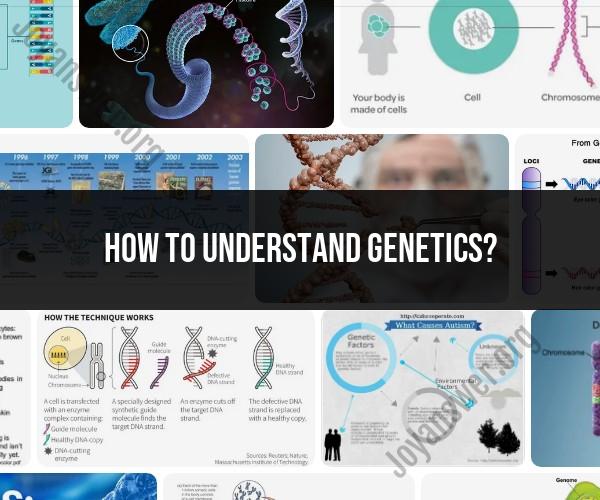How to understand genetics?
Understanding genetics is a complex but fascinating journey into the science of heredity and the role of genes in shaping living organisms. Here's a step-by-step guide to help you understand genetics:
Start with the Basics:
- Begin by learning the fundamental terms and concepts in genetics, such as DNA, genes, chromosomes, alleles, and traits. Familiarize yourself with the structure of DNA and how it carries genetic information.
Explore Mendelian Genetics:
- Gregor Mendel's experiments with pea plants laid the foundation for modern genetics. Study Mendel's laws of inheritance, including the Law of Segregation and the Law of Independent Assortment.
Understand Inheritance Patterns:
- Learn about different patterns of inheritance, such as autosomal dominant, autosomal recessive, X-linked dominant, and X-linked recessive. Understand how these patterns determine the transmission of traits from one generation to the next.
Study Genetic Disorders:
- Explore genetic disorders like cystic fibrosis, sickle cell anemia, Huntington's disease, and Down syndrome. Understand the genetic basis, symptoms, and inheritance patterns of these conditions.
Genetic Variation:
- Genetics also deals with the diversity of traits within a population. Study how genetic variation arises through processes like mutation, recombination, and gene flow.
Genetic Technologies:
- Learn about modern genetic techniques, including DNA sequencing, polymerase chain reaction (PCR), and gene editing (e.g., CRISPR-Cas9). Understand their applications in genetics research and medicine.
Human Genetics:
- Explore human genetics, including the Human Genome Project and the mapping of the human genome. Understand the genetic basis of traits, diseases, and genetic testing.
Population Genetics:
- Study population genetics, which examines how gene frequencies change over time in populations due to factors like natural selection, genetic drift, and migration.
Epigenetics:
- Explore the field of epigenetics, which investigates how environmental factors and lifestyle choices can influence gene expression without altering the underlying DNA sequence.
Genetic Counseling:
- Learn about genetic counseling and its role in helping individuals and families understand their genetic risks, make informed decisions, and manage genetic conditions.
Stay Informed:
- Genetics is a rapidly evolving field. Keep up with the latest research and developments by reading scientific articles, books, and reputable sources.
Online Courses and Tutorials:
- Enroll in online genetics courses or tutorials offered by universities or educational platforms to deepen your knowledge.
Engage with Genetics Communities:
- Join genetics forums, attend conferences, and engage with experts and enthusiasts in the field to exchange ideas and stay updated.
Hands-On Learning:
- If possible, participate in laboratory work or genetic experiments to gain practical experience in genetics.
Ask Questions:
- Don't hesitate to ask questions and seek clarification when you come across complex concepts or terms. Genetics can be challenging, but asking questions is an essential part of learning.
Remember that genetics is a multifaceted field, and it's okay to start with the basics and gradually delve into more advanced topics as your understanding grows. Patience and curiosity are key to mastering the complexities of genetics.













